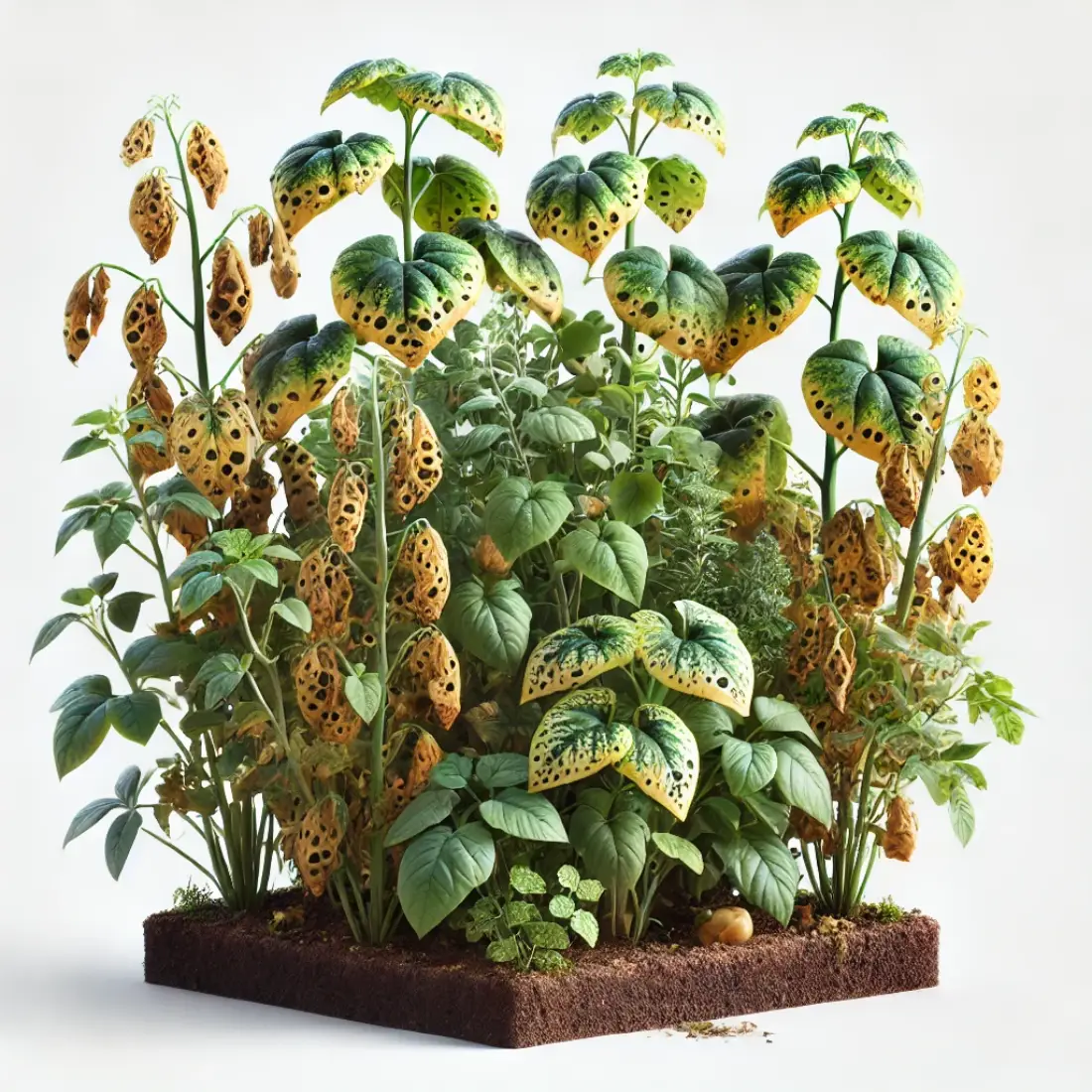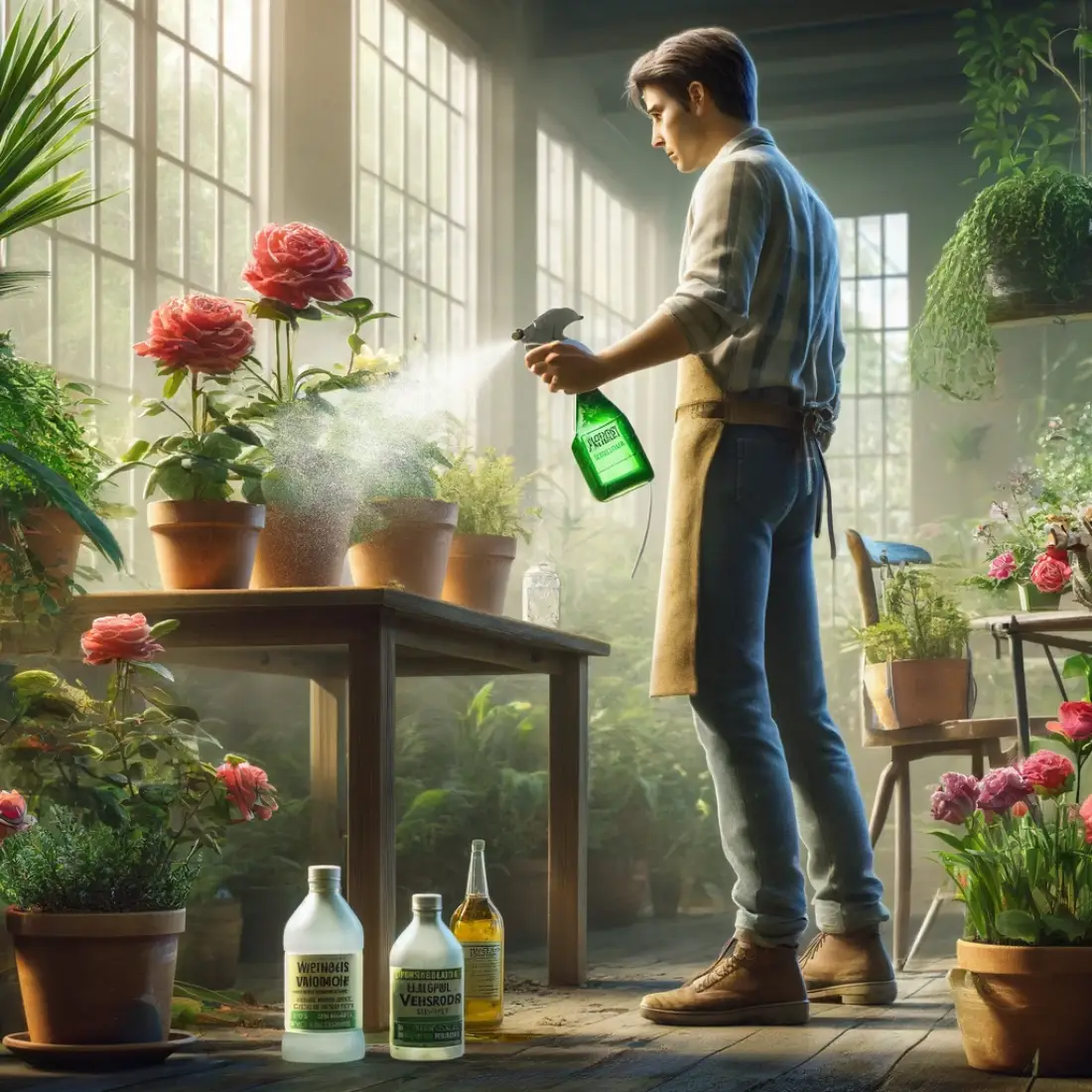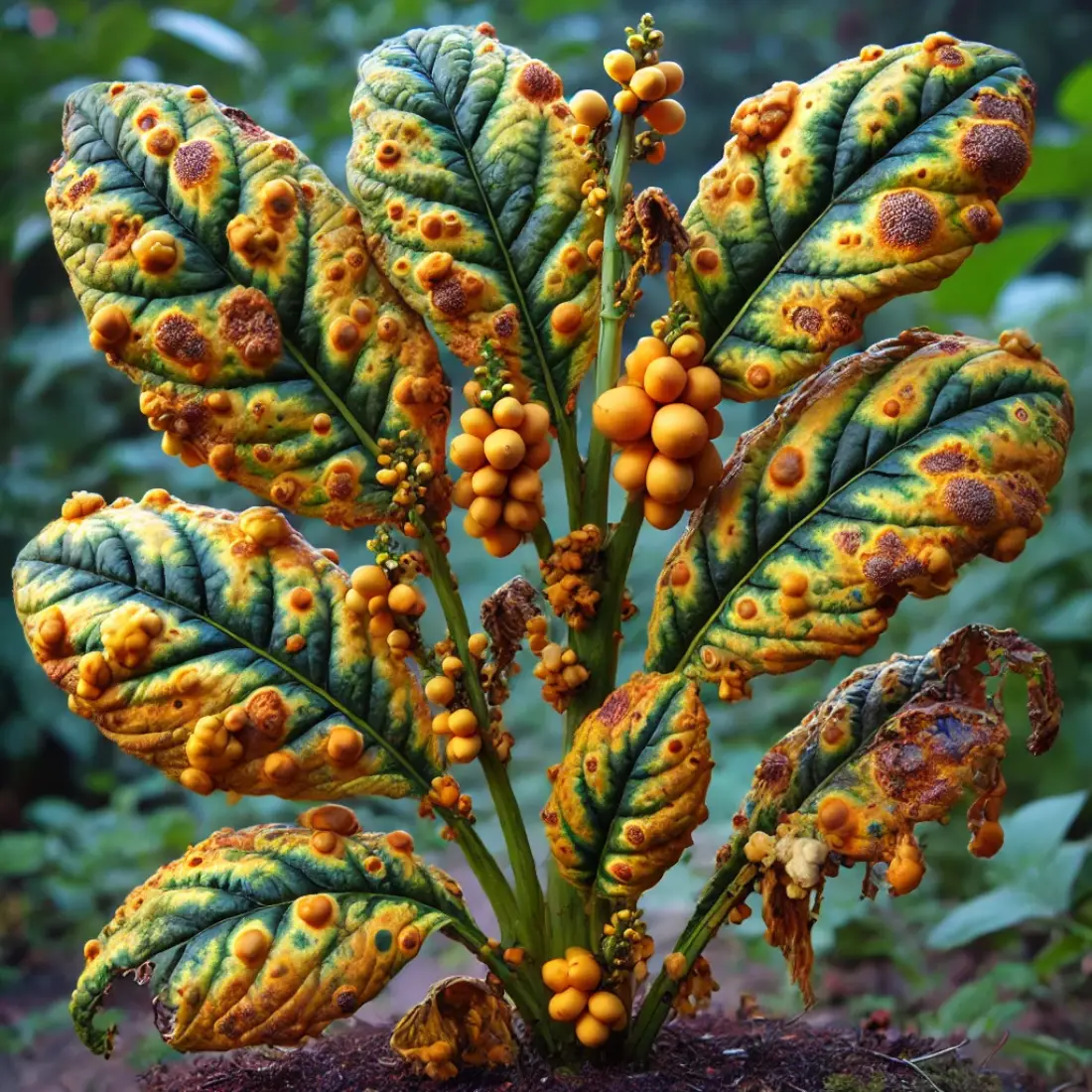Blight is a common and destructive plant disease that can wreak havoc on gardens. It manifests as spots, wilting, and yellowing leaves, ultimately leading to the death of the affected plants if not addressed promptly. Understanding the causes, prevention strategies, and organic control methods for blight is crucial for maintaining a healthy garden.
- Blight is a destructive plant disease: It can cause severe damage to a wide range of plants, leading to reduced yields and even plant death.
- Understanding the causes is crucial: Environmental factors such as humidity and temperature, along with fungi and bacteria, play significant roles in the development and spread of blight.
- Prevention is key: Choosing resistant plant varieties, proper spacing, pruning for air circulation, crop rotation, and garden sanitation are effective prevention strategies.
- Organic control methods are safe and effective: Neem oil, copper-based fungicides, baking soda sprays, and companion planting can help manage blight without harmful chemicals.
- Early identification and intervention: Regular garden inspections and early intervention techniques are essential for controlling blight and preventing its spread.
- DIY solutions are available: Homemade fungicide recipes can be effective in treating blight and are easy to prepare with common household ingredients.
What is Blight?
Blight is a term used to describe a range of plant diseases that cause rapid and widespread damage to plants, often resulting in the death of tissues such as leaves, stems, and flowers. This disease is typically characterized by the appearance of spots, discoloration, wilting, and dying plant parts. Blight can affect many types of plants, including vegetables, fruits, ornamentals, and trees.
There are several types of blight, each caused by different pathogens:
- Early Blight: Caused by the fungus Alternaria solani, it primarily affects tomatoes and potatoes. Symptoms include dark spots with concentric rings on leaves, which can lead to defoliation and reduced yields.
- Late Blight: Caused by the oomycete Phytophthora infestans, it is infamous for its role in the Irish Potato Famine. It affects tomatoes and potatoes, leading to water-soaked lesions, white fungal growth, and rapid plant collapse.
- Fire Blight: Caused by the bacterium Erwinia amylovora, it affects fruit trees like apples and pears. Symptoms include blackened, scorched-looking leaves, and branches, which appear as if they’ve been burned.
Symptoms of Blight in Plants
- Spots and Lesions: Dark, sunken spots on leaves, stems, and fruits.
- Wilting: Plants may suddenly wilt even if the soil is moist.
- Discoloration: Yellowing or browning of leaves and stems.
- Defoliation: Premature dropping of leaves.
- Death of Plant Parts: In severe cases, entire plants can die.
Identifying Blight
- Spots and Lesions: Dark spots with concentric rings.
- Wilting and Yellowing: Leaves turn yellow and wilt.
- Discoloration: Brown or black leaves, stems, and fruits.
- Defoliation: Premature leaf drop.
- Death of Plant Parts: Advanced stages can kill entire plants.
Examples: Tomatoes, potatoes, and fruit trees.
Causes of Blight
- Environmental Factors: High humidity and specific temperatures.
- Pathogens: Fungi (Alternaria solani), bacteria (Erwinia amylovora), oomycetes (Phytophthora infestans).
- Spread: Via wind, water, and infected tools.

Organic Control Methods for Blight
Neem Oil Applications:
- Usage: Apply neem oil to affected plants as a foliar spray.
- Effectiveness: Acts as a fungicide and insecticide, disrupting the life cycle of pathogens and pests.
Copper-Based Fungicides:
- Usage: Spray copper-based fungicides on plants showing early signs of blight.
- Effectiveness: Copper fungicides create a protective barrier, preventing the spread of blight.
Baking Soda Sprays:
- Recipe: Mix 1 tablespoon of baking soda with 1 gallon of water and a few drops of liquid soap.
- Application: Spray on infected plants to alter leaf pH, inhibiting fungal growth.
Companion Planting:
- Examples: Plant basil near tomatoes to deter blight. Garlic and onions also have antifungal properties.
- Effectiveness: Companion plants can repel pests and reduce disease susceptibility.
Homemade Fungicide Recipes:
- Garlic Spray: Blend garlic cloves with water, strain, and spray on plants.
- Milk Spray: Mix 1 part milk with 9 parts water and spray on leaves. The enzymes in milk can help fight fungal infections.
Monitoring and Managing Blight:
- Regular Inspections: Check plants frequently for early signs of blight.
- Early Intervention: Remove infected leaves and use organic treatments promptly.
- Integrated Pest Management (IPM): Combine cultural, biological, and organic methods for comprehensive blight control.
Step-by-Step Guide to Preparing and Applying Treatments:
- Gather Ingredients: Ensure you have all necessary ingredients and tools (spray bottle, blender, strainer).
- Prepare the Solution: Follow the recipes to create your fungicide mixtures.
- Application:
- Timing: Apply sprays early in the morning or late afternoon to avoid leaf burn.
- Frequency: Spray once a week and after rain for continued protection.
- Coverage: Ensure thorough coverage of both upper and lower leaf surfaces.
Safety Tips for DIY Methods:
- Test First: Apply a small amount of the solution to a few leaves before treating the entire plant to check for adverse reactions.
- Proper Storage: Store homemade fungicides in labeled containers away from children and pets.
- Personal Protection: Wear gloves and eye protection while preparing and applying treatments to avoid skin and eye irritation.
Prevention Strategies for Blight
Choosing Resistant Plant Varieties:
- Resistant Varieties: Select plant varieties that are resistant to blight. Look for tags or labels that specify resistance to early or late blight.
- Examples: Some tomato and potato varieties are bred specifically for blight resistance.
Proper Spacing and Pruning for Air Circulation:
- Spacing: Plant crops with adequate space between them to ensure good air circulation. This helps to keep foliage dry and reduce the spread of blight.
- Pruning: Regularly prune lower leaves and branches to improve airflow around the plants.
Crop Rotation Practices:
- Rotation Plan: Rotate crops annually, especially those susceptible to blight (like tomatoes and potatoes). Avoid planting them in the same spot more than once every three years.
- Benefits: Crop rotation disrupts the life cycle of blight pathogens that may be present in the soil.
Sanitation and Removing Infected Plant Material:
- Clean-Up: Remove and destroy any infected plant material promptly. Do not compost diseased plants, as this can spread the blight.
- Tool Sanitation: Regularly clean gardening tools with a disinfectant solution to prevent the spread of pathogens.
Soil Health and Mulching:
- Soil Management: Maintain healthy soil with good drainage to prevent waterlogged conditions that favor blight.
- Mulching: Use mulch to reduce soil splash, which can transfer blight spores from the soil to plant leaves.
Watering Practices:
- Watering Technique: Water plants at the base rather than overhead to keep foliage dry.
- Timing: Water early in the day so plants can dry before evening.
Monitoring and Early Detection:
- Regular Inspections: Check plants regularly for early signs of blight, especially during periods of high humidity or after rain.
- Prompt Action: Remove any affected leaves or plants immediately to prevent the disease from spreading.
FAQs About Blight in the Garden
How can I tell if my plant has blight?
Blight typically manifests as dark spots on leaves, wilting, yellowing, and premature leaf drop. Look for lesions with concentric rings or water-soaked spots, depending on the type of blight.
What are the different types of blight?
There are several types, including early blight (caused by Alternaria solani), late blight (caused by Phytophthora infestans), and fire blight (caused by Erwinia amylovora). Each affects different plants and has distinct symptoms.
How does blight spread?
Blight spreads through wind, water splash, and contaminated tools. Spores can be carried over long distances by wind or spread within the garden via rain and irrigation.
Can blight be completely eradicated?
Blight is difficult to eradicate completely due to its environmental persistence. However, it can be managed effectively with proper prevention and organic control methods.
Are there any plants that are immune to blight?
While no plants are entirely immune, some varieties are resistant to specific types of blight. Choosing resistant varieties can reduce the risk of infection.
How often should I apply organic treatments for blight?
Apply organic treatments like neem oil or baking soda spray weekly and after rain. Consistent application is key to preventing and controlling blight.
Can blight affect indoor plants?
Blight primarily affects outdoor plants due to the environmental conditions it requires. However, if indoor plants are exposed to infected outdoor plants or contaminated tools, they could potentially be affected.
What should I do with infected plant material?
Remove and destroy infected plant material immediately. Do not compost it, as this can spread the disease. Bag and dispose of it in the trash.
How can I prevent blight from returning next season?
Practice crop rotation, choose resistant varieties, maintain good garden sanitation, and ensure proper spacing and airflow. Regular monitoring and early intervention are crucial.
Are there any natural predators or beneficial insects that help control blight?
While beneficial insects help control other pests, they do not typically control blight pathogens. Focus on organic treatments and cultural practices to manage blight effectively.









